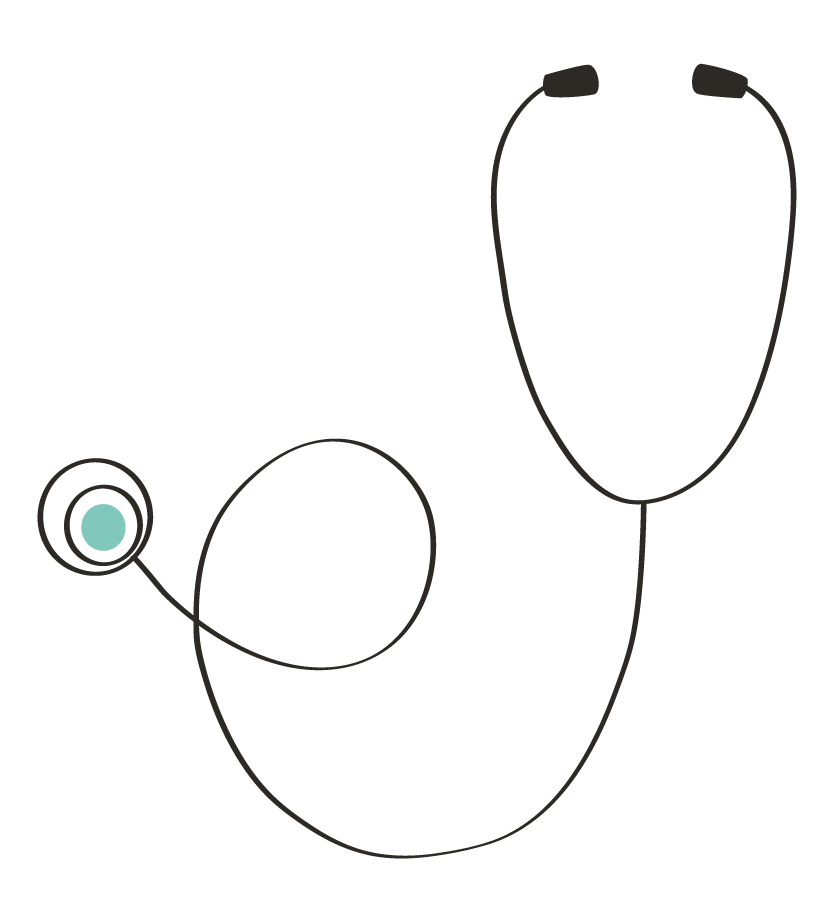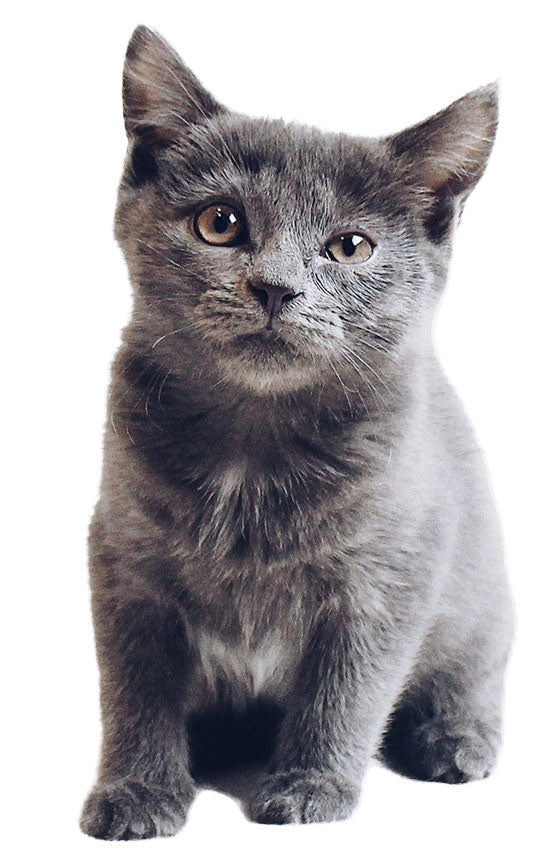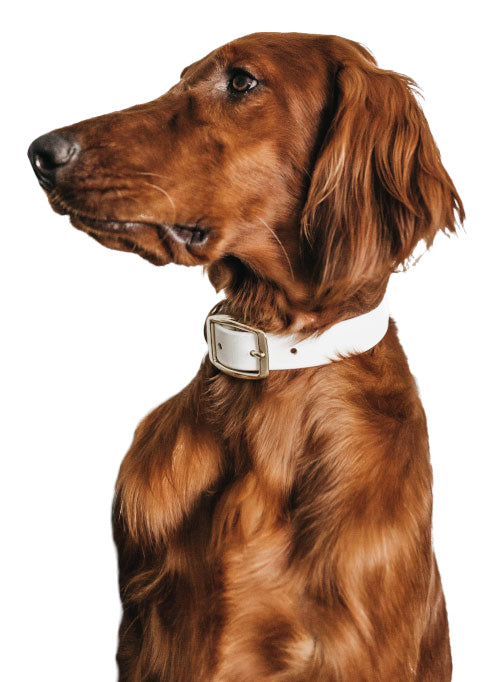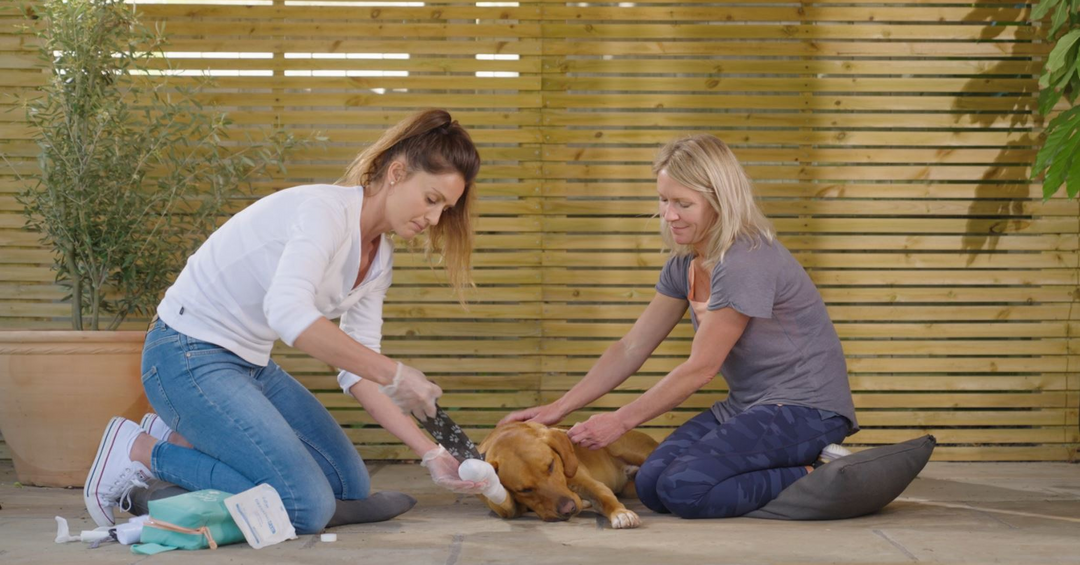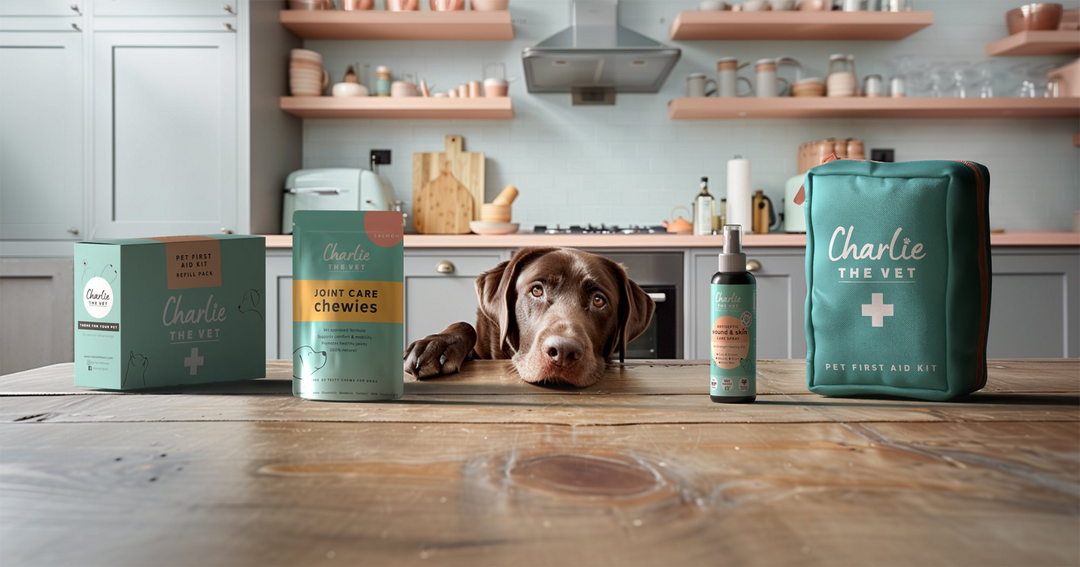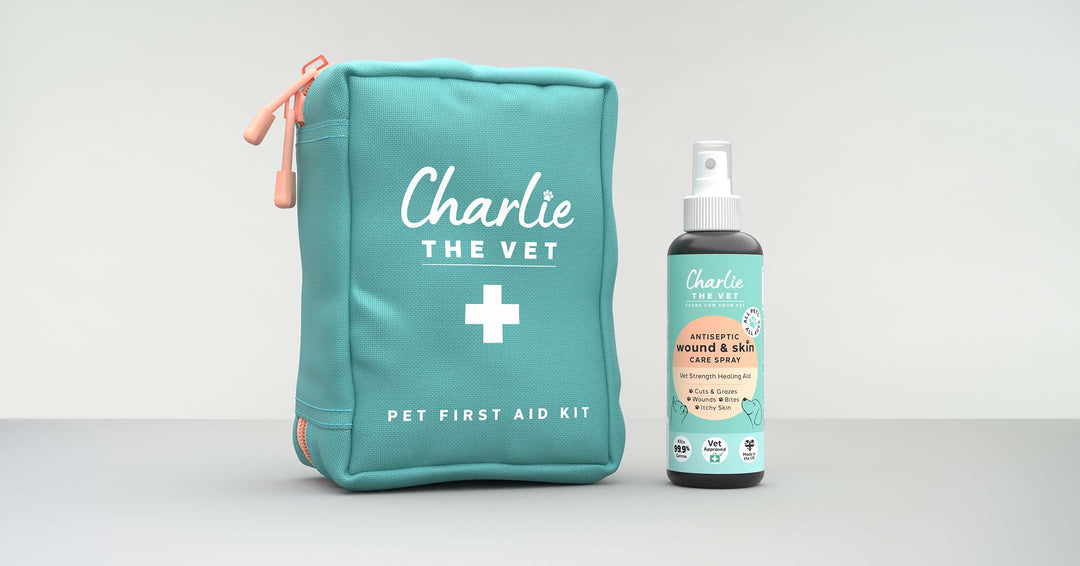Wounds
Wounds treated within 6 hours
have a better outcome
Step 1:Inspection
- Put the gloves in the kit on.
- Inspect your pet fully for signs of injury or pain elsewhere.
- Take care, your pet may be frightened or in pain and could bite.
- If you can’t safely examine your pet call your vet.
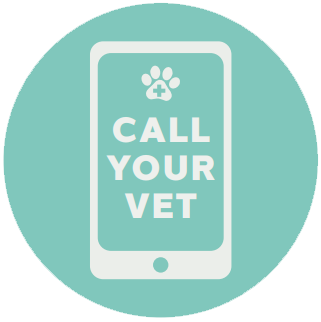
Step 2: DO YOU NEED TO GO STRAIGHT TO A VET?
Go to your vets if
- The wound is deep, large, bleeding heavily, or won’t stop bleeding.
- The wound is old, showing signs of infection
- Bad smell
- Discharge
- Itchy
- Swollen
- Red/angry
- The wound is not healing normally or is an abnormal colour.
- It is a bite or puncture wound (these can be worse than they look).
- If it is an unexplained sore.
- You think there could be something stuck in the wound.
- Your pet has recently had surgery or they seem unwell, in pain or in shock.
- If you suspect serious trauma such as being hit by a car - note that cats will often have lots of scuffed nails if involved in trauma.
- The injury is a burn or scald – in these cases run cold water over the area for 5 minutes and cover with a wet towel before leaving for vets.
- You are not sure or are worried for any reason.
Step 3: STOP ANY BLEEDING
- If the bleeding is light, apply pressure with a gauze swab, or use the styptic stick. The bleeding should stop within a few minutes, if it does, move to Step 4.
- If the bleeding is heavy (or won’t stop), call your vet.
Step 4: CLEAN WOUND
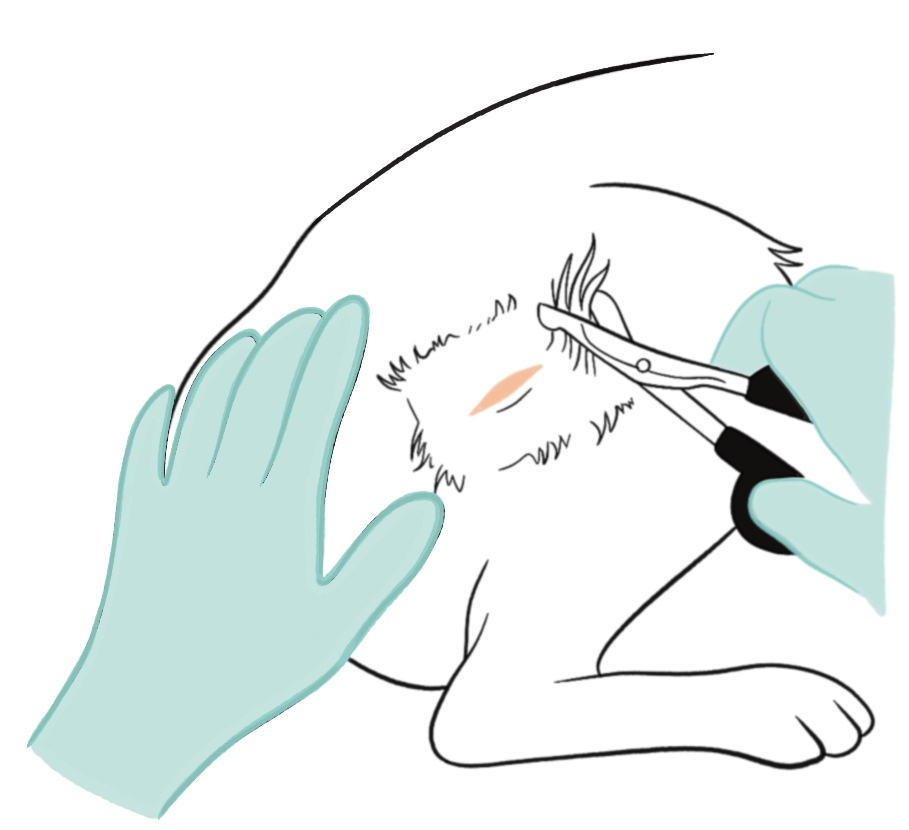
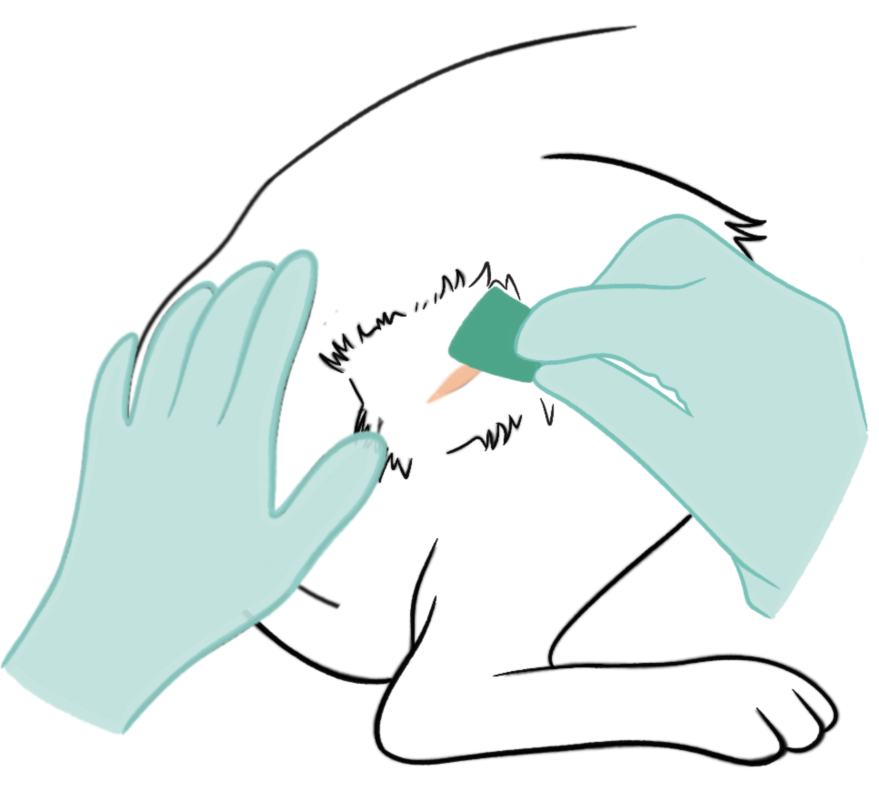
- Clip any excess hair from around the wound using the scissors in your kit.
- Remove dirt and bacteria from the area by flushing the wound out with water (use the syringe in the kit, or the saline pods).
- Clean the area with the iodine wipes in your kit (wipe from middle of the wound outwards).
- If you have run out of iodine wipes: use salt water (one teaspoon of salt in a pint of boiled water that has cooled down), and the gauze swabs in your kit.
- If you have run out of gauze swabs, you can use cotton wool.
Step 5:PREVENT YOUR PET FROM LICKING THE AREA
- Use a Buster/Elizabethan Collar or an old item of clothing as a barrier (e.g. a t-shirt).
- You can also use a bandage, especially if the injury is on a paw or lower leg.
- See section on bandaging for further details.
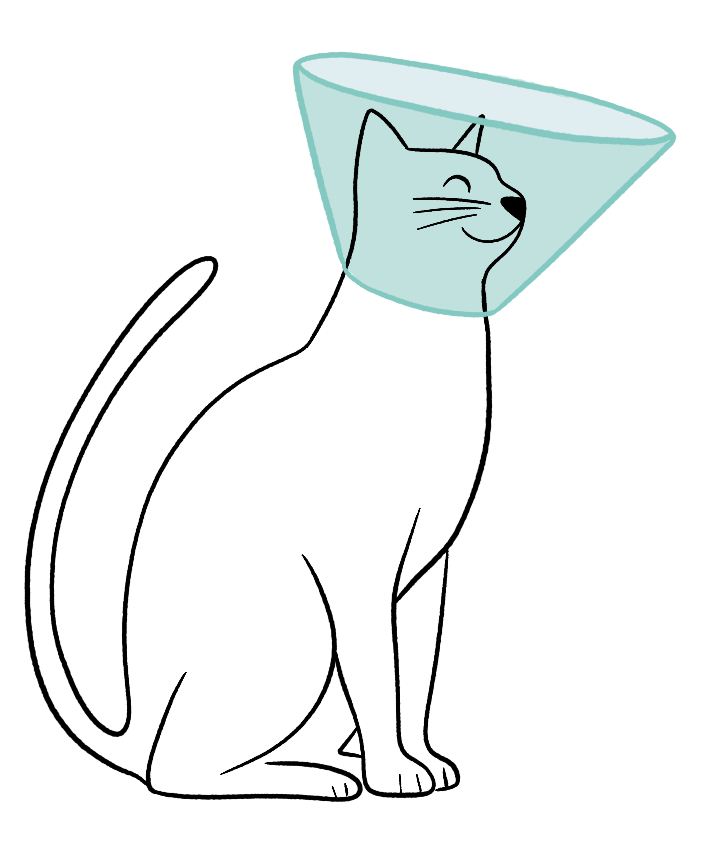
Did you know?
- Ulcerated, sore, wet looking patches of skin (known as hot spots or wet eczema), can be a sign of an underlying problem e.g. ear infection, anal gland problem or flea allergy. Always consult your vet with these cases.
- With any wound, if in doubt, contact your vet for advice. Some vets will allow you to e-mail pictures in so they can advise whether your pet needs to be seen or not.
